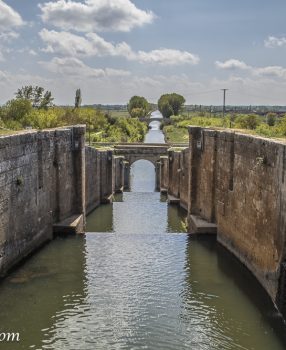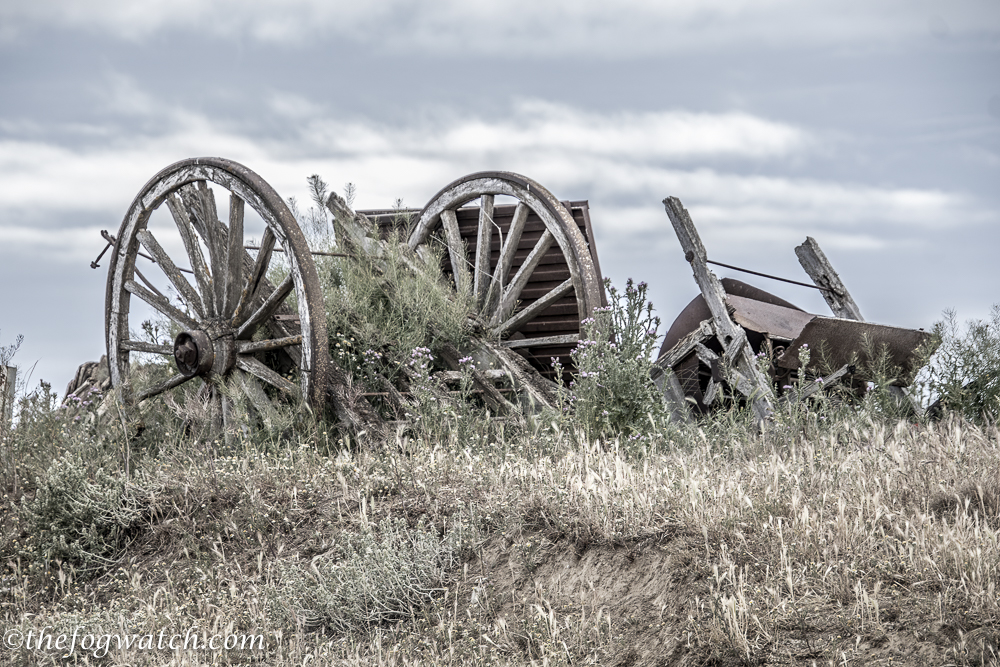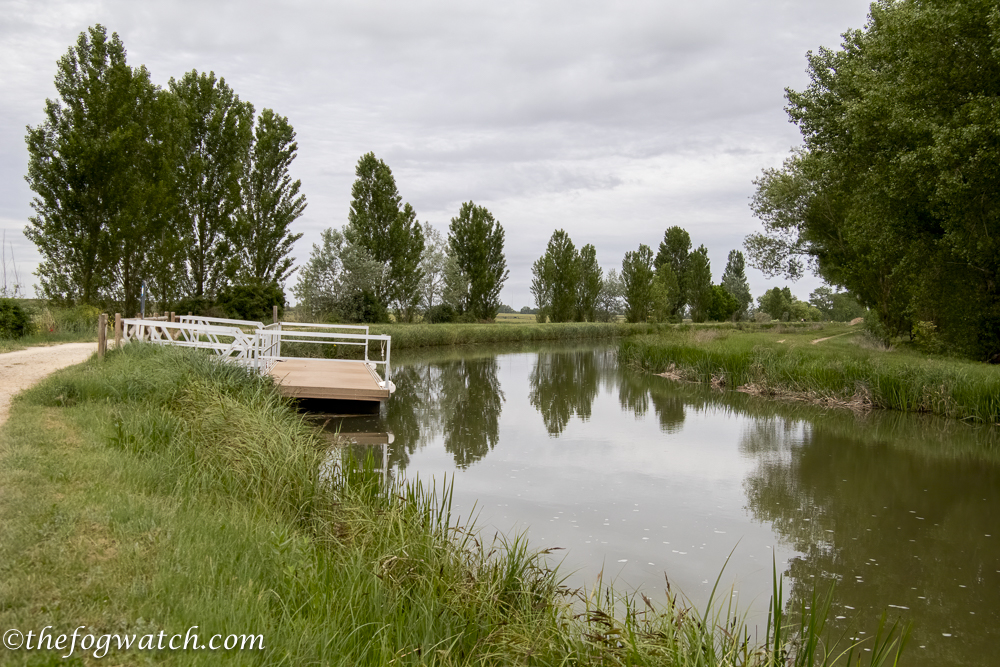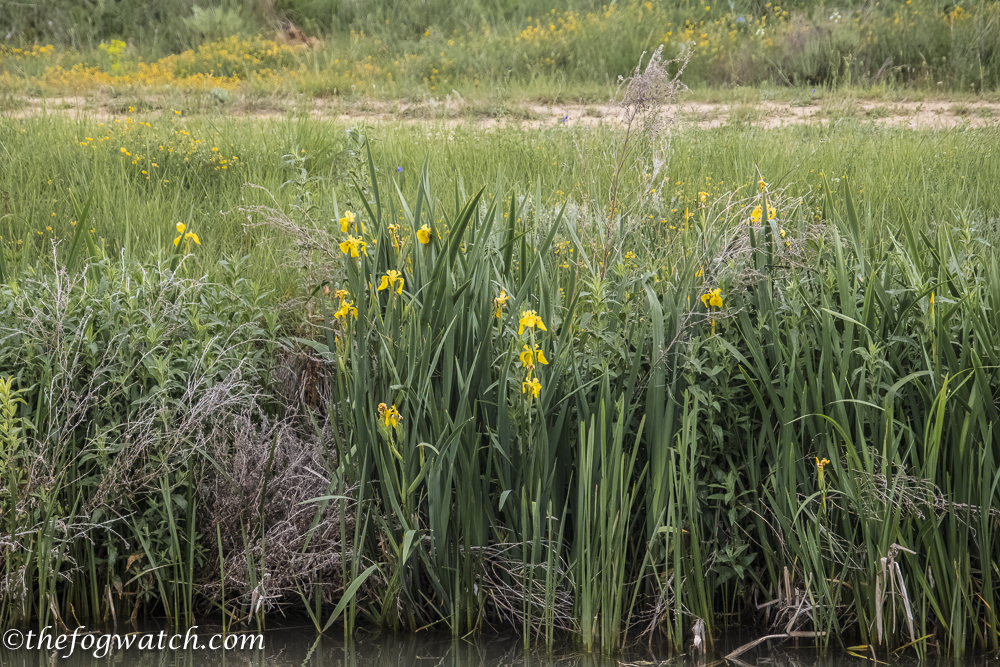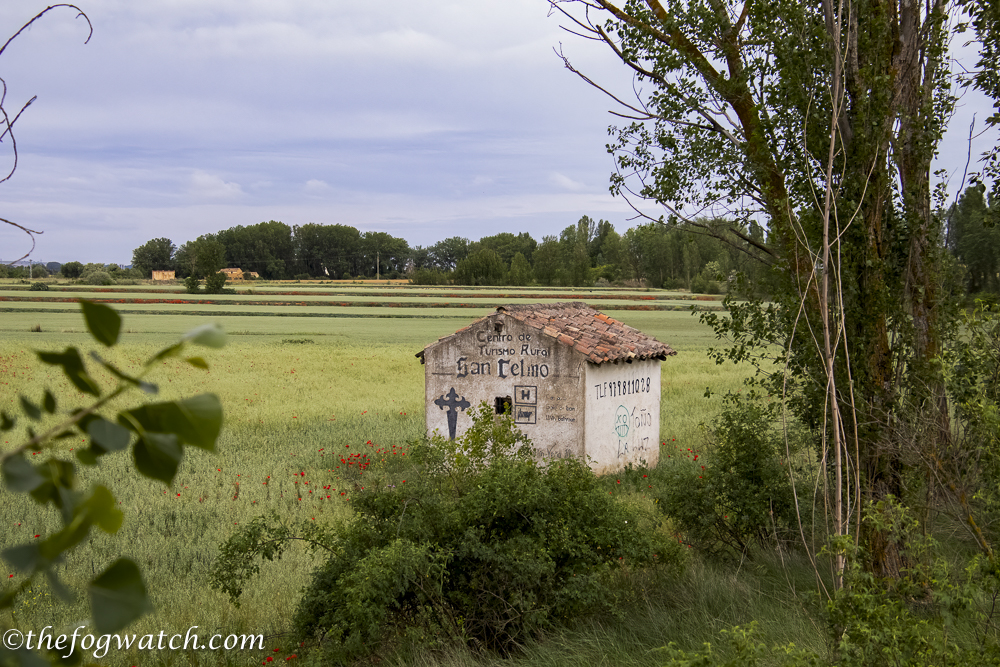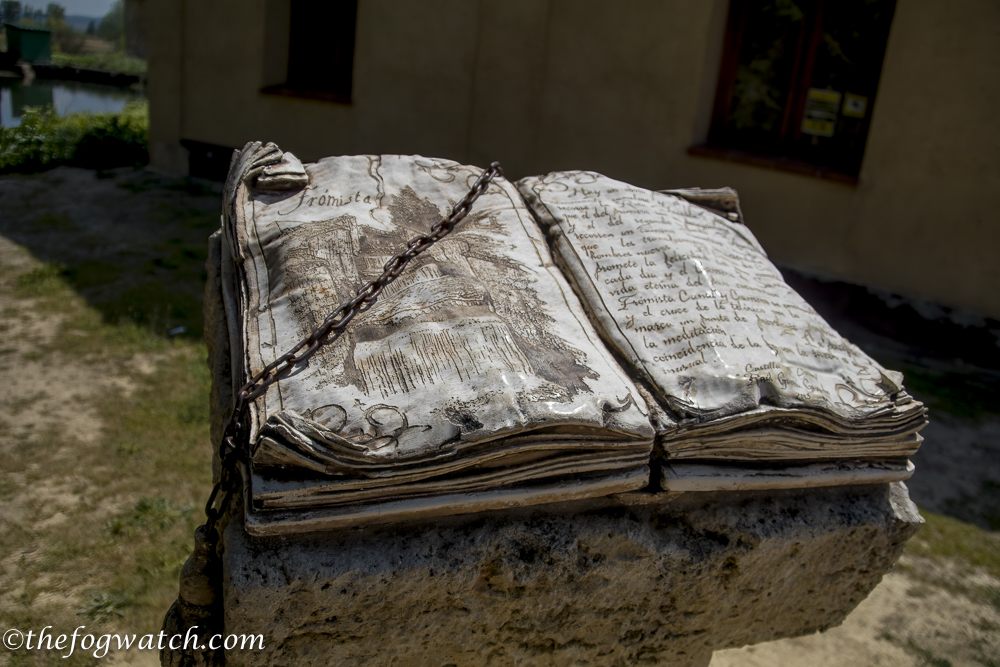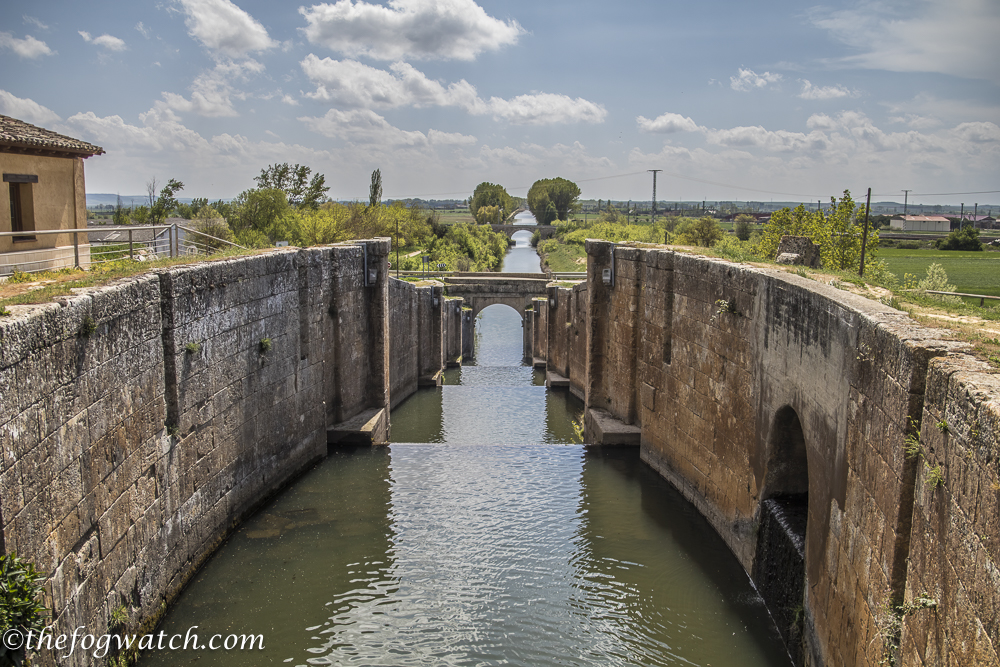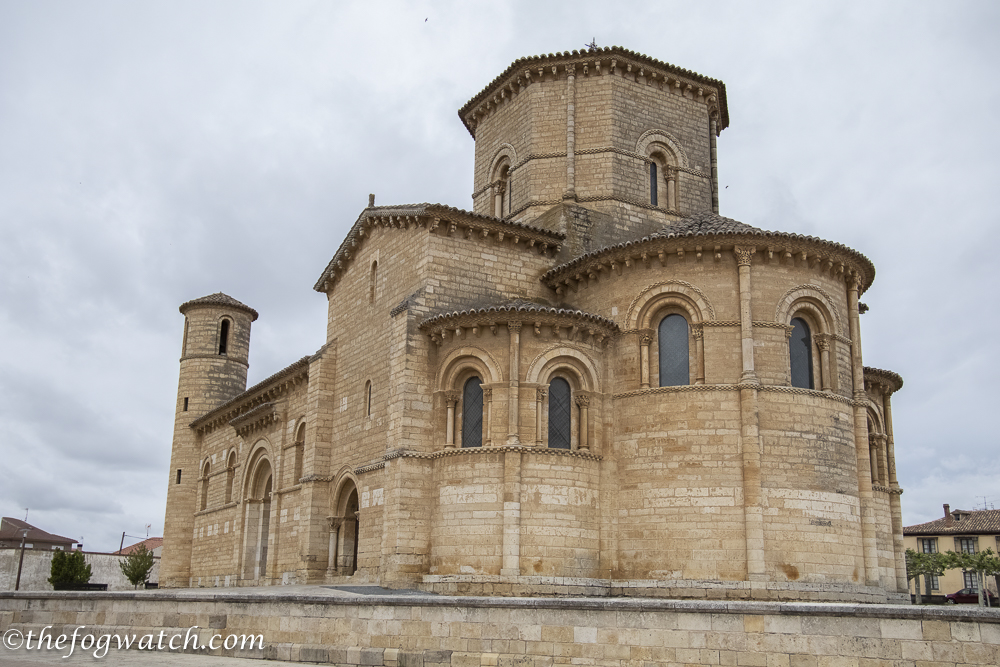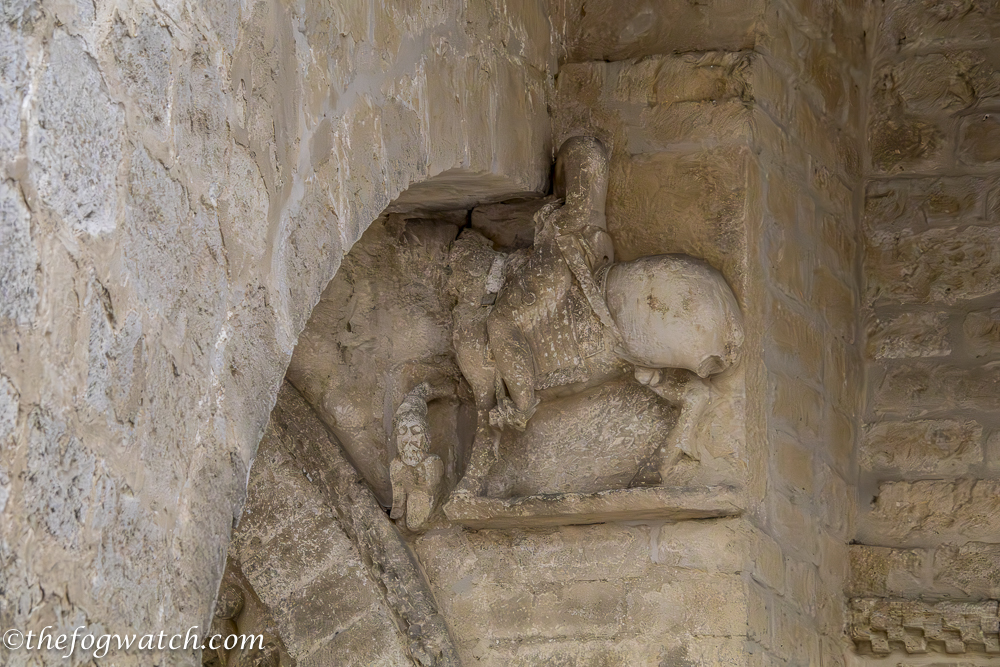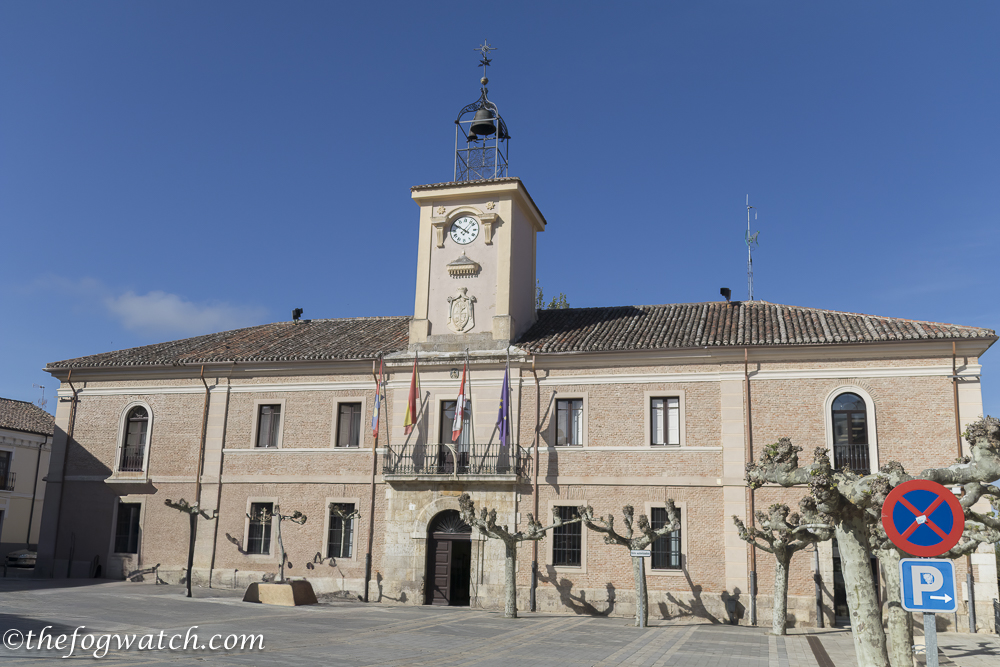At dawn, we set out for Carrion de los Condes. On the outskirts of Boadilla, we passed a hobbit-house-style storage shed, larger than previous ones we’ve seen, making it look more like a Hobbit Hotel than a wine cellar.
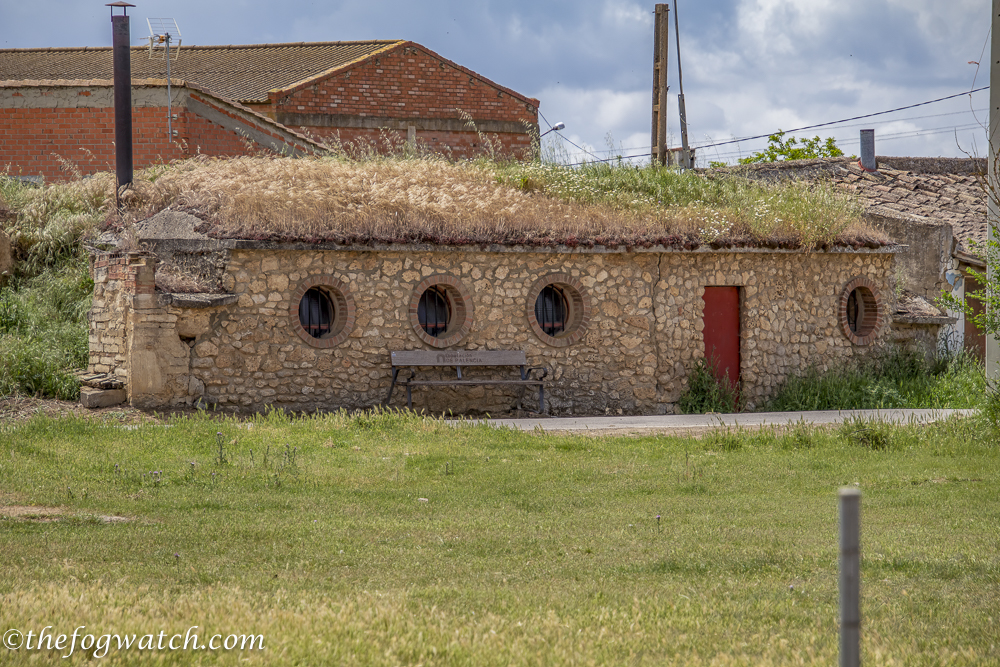
On a hill nearby, we saw an ancient hay cart, parked as we so often see on Australian farms, at the end of a paddock to decay into its component parts.
Within about a kilometre, we came upon the Canal de Castilla that takes our path into Fromista some 5km away. You can actually book and take a canal boat for this part of the trip. We saw a couple of jetties along the way, and finally, the boat itself, parked in Fromista above the locks.
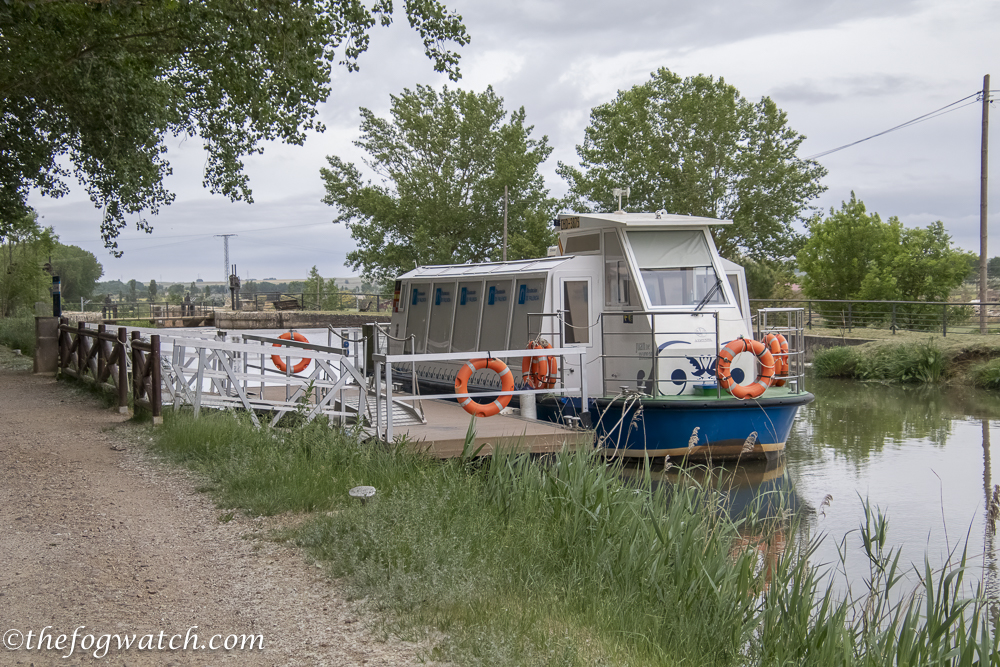
You can see Irises and reeds growing along the banks of the canal. The birds are different here, and we are hearing different bird calls, alongside the call of the frogs.
The canal is a refreshing sight in this semi-arid tableland of the Meseta, and has quite a history. Catholic king Fernando proposed the canal for irrigation, transport, and power for the mills. He had seen the canal system in Britain and wanted to bring this modern system of transport to Castilla. But in the end it wasn’t built until the 1750s under Carlos III’s minister, the Marquies de la Ensenada. Building took around 50 years, and comprised four canals through the Tierra de Campos.
By the time they were completed, the emerging railway superseded the heavy goods transport function of the canals. That said, they continue to provide water for irrigation and power for nearby factories. In the 1850s, this canal provided power for a mill, two flour factories, and two fulling mills, as the region was known for felt production. In 1986, the canal water below the locks was diverted into pipes to provide hydroelectric power for local factories. It still provides a useful function nearly 250 years later.
On the left, in a paddock, stands a stone shed advertising the ‘Centro de Turismo Rural de San Telmo. The saint, Pedro Gonzáles Telmo, has been anglicised as Saint Elmo, who gave his name to the electrical weather phenomenon on ships known as St Elmo’s Fire. Pedro Telmo was born in Fromista. He is also known as Erasmus.
He was the bishop of Formiae in the Campagna region of Italy. Under Diocletian’s reign, he was tortured by being rolled in pitch and set alight. He was then cast into prison, subsequently released, and he went to Illyricum, where he was again tortured until an angel took him to Formiae, where he died around 300 CE. At one point, he was said to have preached on a ship during a thunderstorm, undeterred by a bolt of lightning nearby. So he became the patron saint of sailors. The electrical phenomenon associated with electrical storms at sea was said to be showing St Elmo’s protection. His symbol is a sailor’s windlass.
As you approach the lock by the entrance to the town, look to the left and you’ll find a treasure. On a cement plinth rests a sculpted book with the following quote in Spanish (translated thanks to Google Translate) from acclaimed Spanish writer Raúl Guerra Garrido, describing the intersection between the physical and the metaphysical path embodied in the canal’s bridle path. It is a path that brings together the sacred and the profane. Raúl Garrido walked the 207 km of the canal network and walked a secular pilgrimage intersecting with the Camino de Santiago in Frómista. His book about the canal brings to life the aspirations embodied in the canal project to develop the less-populated Meseta, weaving a mythical space within the context of this humanist vision of the C18th.
“Hay un obvio para caminante canalero y el peregrino que recorre la ruta Jacobea por mas que el del primero sea un peregrinaje cerca y el del secundo sagrada Ambas secossen un camino iniciativo sacrificial que les transformasa renaciendidos en promete la felicidad del san nuestro de cada dia y el Camino de Santiago la vide eterna del san eucaristo. Fromista canal y camino se encuentran y el cruce de la telerico con lo teirgico marca un punto de privilegio propicio la meditation. La pacifica coincidencia de la fe con la razon es algo inusual” [Raúl Guerra Garrido: Castilla en Canal]
“There is an obvious [reason] for walking the canal for both the canal walker and the pilgrim who travels the Jacobean route, even though the former is a secular pilgrimage and the latter is sacred. Both are a sacrificial initiatory path that transforms them, reborn, into promises of the happiness of our inner self and the Camino de Santiago, the eternal life of the church. From this, canal and metaphorical path meet, and the intersection of earthly utility with the ideal or spiritual, marks a point of privilege conducive to meditation. The peaceful coincidence of faith with reason is something remarkable.”
Fromista dates back to the Roman settlement of Frumentum, denoting that this was a wheat-growing region that helped supply the Roman Empire. Following Rome’s collapse, the town was maintained by the Frankish settlers before it was sacked by the Moors. Restored during the Reconquista, the town thrived, benefiting from an influx of Jews displaced by the Moors further south.
And this gave rise to the miracle of Fromista. The story concerns a merchant called Pedro Fernandez de Teresa. In 1453 he failed to pay back a loan he had made from the Jewish Matudiel Solomon. The Christian priest warned him that failure to pay his dues would result in excommunication from the church. So, reluctantly, he paid up, but showed no remorse or contrition.
On his deathbed, when the priest tried to give him communion, the communion host, or wafer, remained resolutely stuck to the platter, and nothing the priest could do would make it come loose. Then, after Pedro confessed and received absolution, the priest was able to give him another host. The ‘resistant’ wafer was preserved as a relic, and from then on, Fromista was given the nickname ‘Villa del Milagro’ — the town of the miracle. Perhaps this host was used to illustrate that one should always pay one’s debts in good faith.
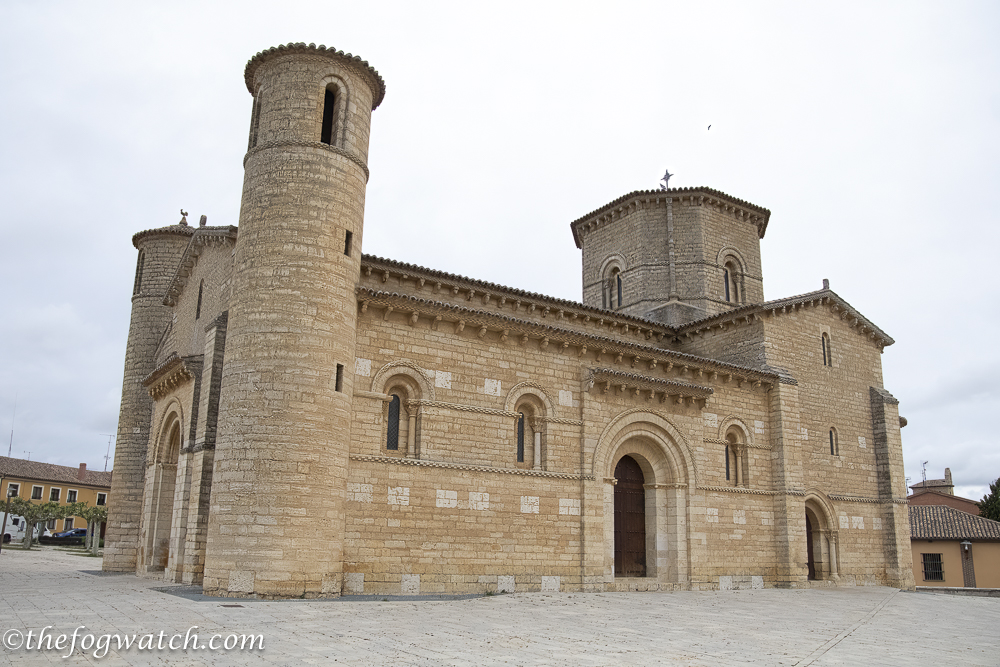
The church of San Martin dominates the Fromista skyline and is one of the finest Romanesque churches on the Camino. Its construction began in 1066, funded at least in part by the widow of Sancho el Mayor of Navarra. It was designed and built by the architects of the cathedral in Jaca, and resembles a smaller version of that cathedral. The two-layered roof, octagonal cupola, and rounded apses are along the lines of the Jaca cathedral, although the two towers are particular to San Martin.
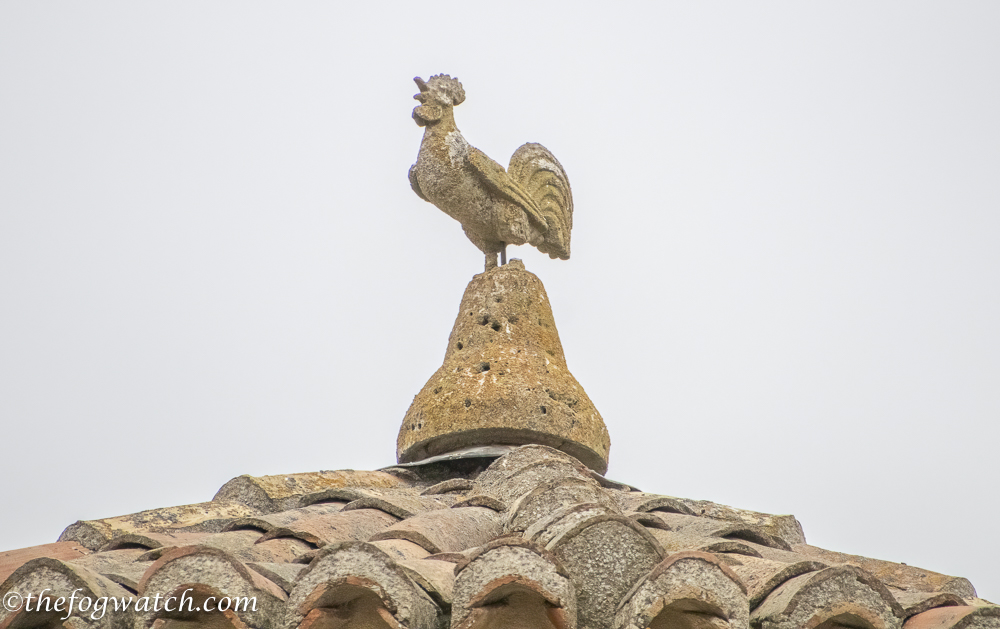
If you look up, you can see a rooster on the top of one of the round towers — for some, it symbolises St Peter’s denial of Christ, or more generally, the fleeting nature of life, hence the importance of repentance.
The church is in remarkable condition, owing to a C19th restoration, which apparently removed some of the more salacious grotesques. There are geese carved into the top of one of the column capitals, perhaps a nod to the Game of the Goose with its Templar references.
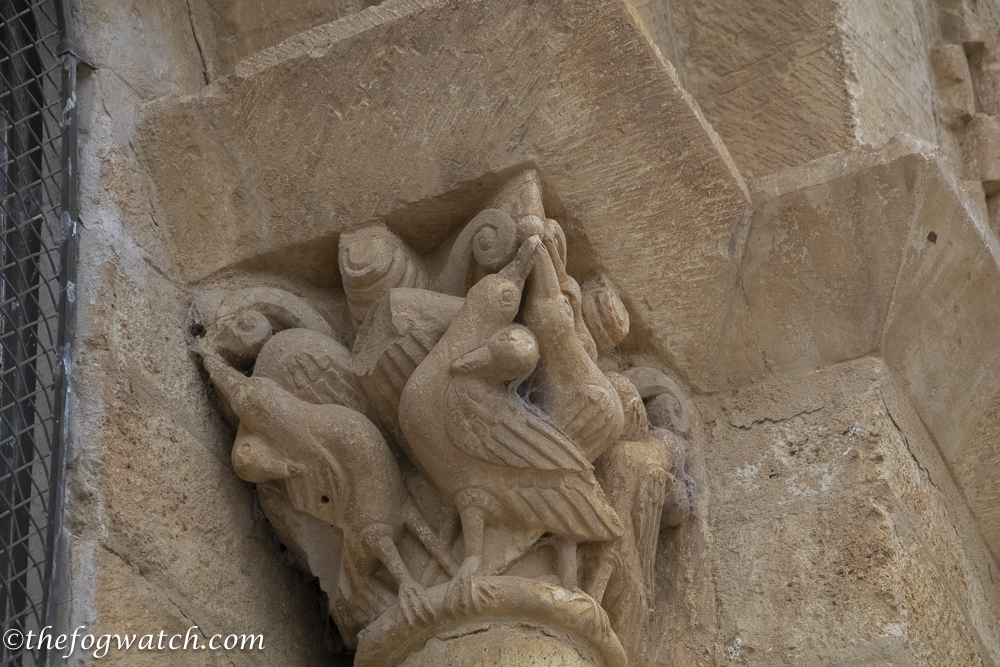
But inside the capitals of each column are beautifully carved, and there is a treasure — in a niche to the left of the main altar is a black Madonna. Given that most statues of the period were fully painted, and that where the paint has been rubbed, you can see through to the plaster beneath, it is clear to me that the chocolate coloured face and hands are deliberate, as is the Christ figure on her knee.
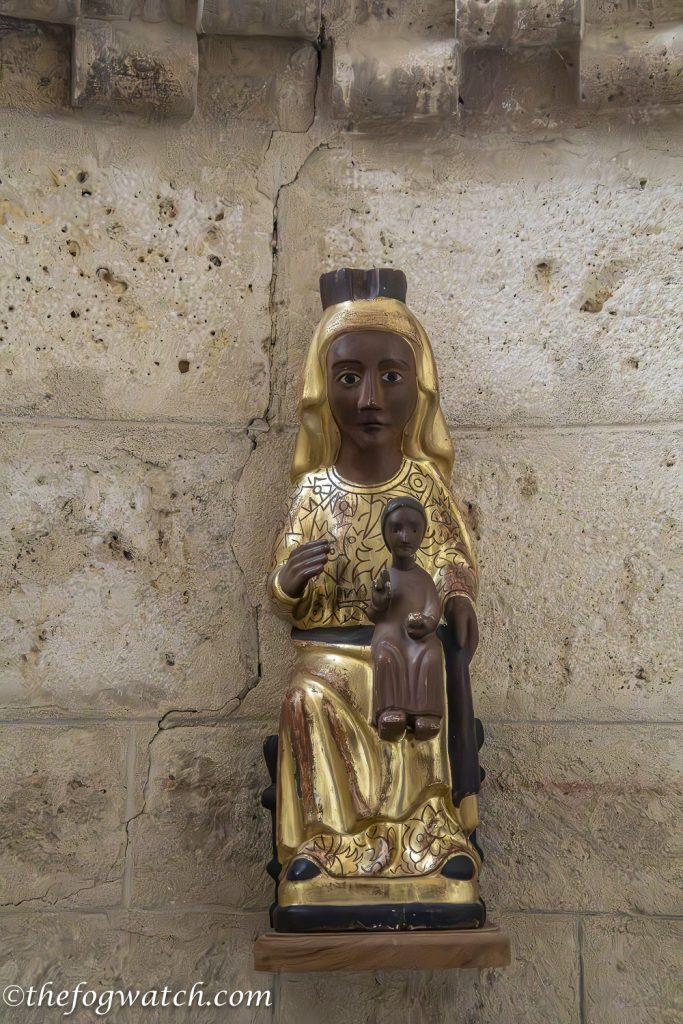
Outside, the porch appears to be a later addition, as indicated by the unfortunate headless knight about to be swept from his horse by the low connecting arch.
The town suffered greatly in earlier centuries from plagues of locusts, as recorded by Domenico Laffi, a C17th Italian pilgrim who walked from Bologna to Santiago. Of Fromista, he says:
“This place is so big it is like a city, but there is a terrible famine, since, because of the locusts, they have been able to harvest neither wheat, the vines nor fruit, nor anything. It is wretched to see these places so desolate because of these creatures. At night all the inhabitants of the area go out through the town with wooden clubs and kill the locusts which collect under the walls during the day, covering them so that they appear to be painted black. At night they fall to the ground because of the cold, and then they come and kill them. If they did not do this they would indeed have to abandon the land, and the very town itself.” [Laffi, D: A Journey to the West]
In the C19th they built dovecotes so that the doves would eat the insects, fertilise the crops with their droppings, and would themselves provide a source of food. Today, the crops are sprayed with insecticides, ensuring plentiful harvests.
Many houses in the town are constructed from mudbrick or straw with an outer coating of adobe. They seem to survive well in this fairly dry part of the country, and the straw would provide excellent insulation from the summer heat.
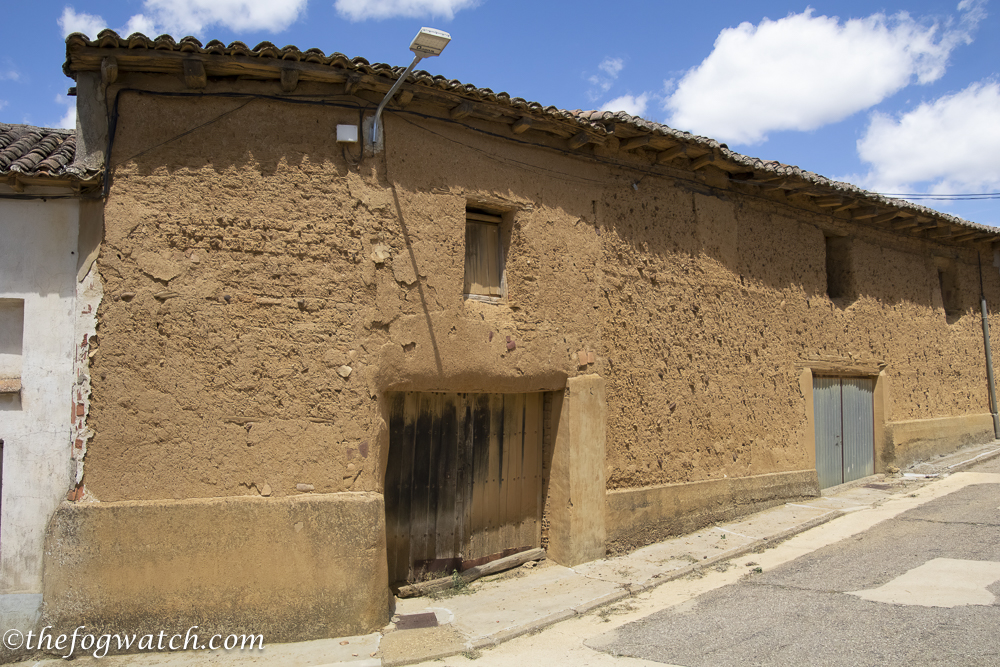
And some houses appear to have been built in the style of an ancient Roman domus or house, with its focus inward towards the atrium or garden, surrounded by the bedrooms, kitchen, dining room, a passage to the street and so on.

Leaving Fromista, after a good lunch, we again set off alongside the main highway through Población and Villalcazar de Sirga and into Carrion de los Condes, where we stayed at Hostal La Corte.
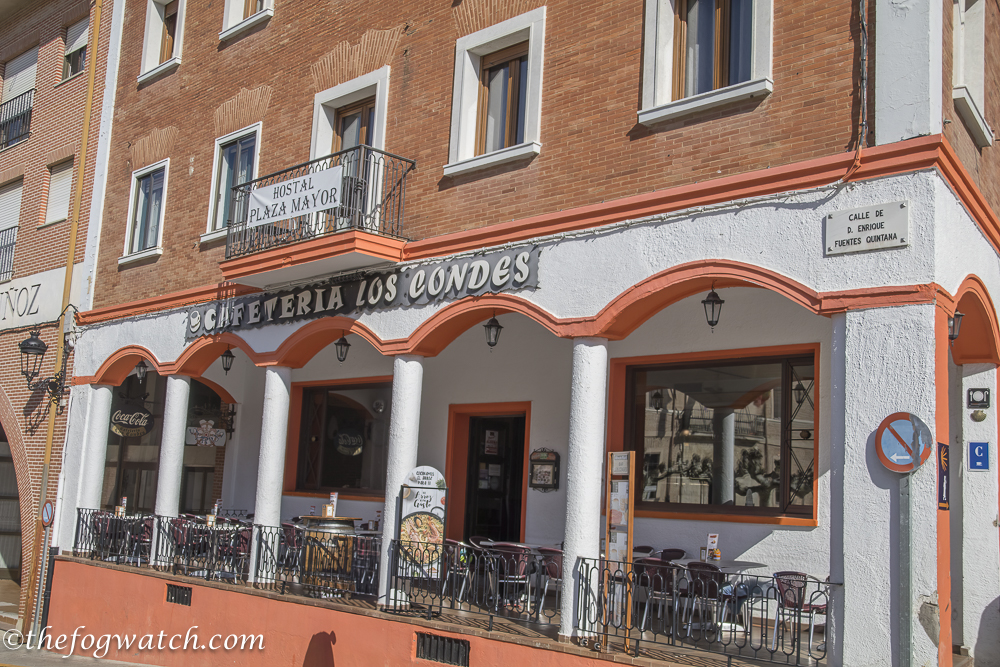
As the kilometres wear down, we are nearing the halfway point on the Camino.
From Boadilla with its ancient flogging pillar, past a canal built to provide transport, power, and nourishment where the spiritual and the physical paths meet, then on through the storied Fromista, a town associated with St Elmo’s Fire and a black Madonna, we continued along the highway to reach Carrion de los Condes.

